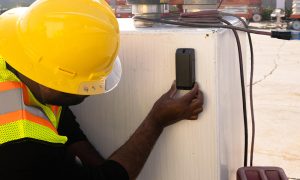German construction equipment sales hit $9.6bn in 2014
High demand for earth-moving and road-construction equipment helps push sales up by 8%, but turnover still lower than boom years

Total output from the German construction-equipment manufacturing industry reached $9.6 billion (€8.4bn) in 2014, a figure roughly the same as sales in 2006, according to figures from the Construction Equipment and Building Material Machinery Association of the German Engineering Federation (VDMA).
Sales were up 8% over the previous year, while incoming orders were up 7%. Demand was highest for earth-moving and road-construction equipment. Larger equipment sold slowly, due to the difficult situation of the global mining industry, explained Joachim Strobel, Deputy Chairman of the VDMA and managing director of Liebherr EMtec.
The building construction machinery area remains depressed and is recovering rather slowly, with its turnover still 50% lower than during the boom years of 2007-8.
Orders for German-manufactured construction equipment rose in the second half of 2014, in line with the weakening currency, which has given a boost to exporters in the machinery and vehicle industries.
Strobel said that in 2015 the industry trend will be to continue ‘sideways’, with the German market stable and having exceeded all expectation with growth of 9% in 2014. Nevertheless other European markets are less positive, with “dark clouds on the French sky”.
“There are no investments being made anymore in [France, the] second most important European market for compact engines. Also, there are hardly any calls to bid anymore due to political irritations. It is a hard blow for many a company,” said Strobel.
Sales to Russia, an important German export market, declined by 37% compared to the previous year and, in light of the current political tensions, recovery is not yet to be expected, noted Strobel.
New emission requirements are also complicating product development cycles and market forecasts.
“Turnover is one thing, profit is another,” said Strobel. “In former years, we were used to seeing seven-year cycles – this is a thing of the past.”
Following intensive investment to meet the new emission standards that have been phased in since 2009, manufacturers are facing deadlines in 2019 and 2020 for cleaner engines with reduced levels of particulate matter (PM). While the standards are technically feasible, Strobel argues that the deadline is too soon.
“With development periods being five years and in light of the technical developments required, these deadlines are far too tight. The industry is therefore fighting in Brussels to achieve a prolongation for the deadlines to implement and more predictability and possibility to plan,” he said.













